economist and government political adviser
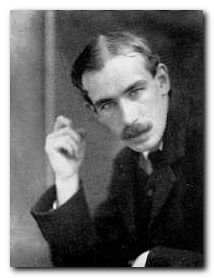 John Maynard Keynes (pronounced “Kaynz”) was one the most important figures in the history of economics. He revolutionized the subject with his classic study, The General Theory of Employment, Interest and Money (1936). This is generally regarded as one of the most influential social science treatises of the twentieth century. It quickly and permanently changed the way the world looked at the economy and the role of government in society. He was born in 1883 in Cambridge into an academic family. His father, John Nevile Keynes, was a lecturer at the University of Cambridge teaching logic and political economy. His mother Florence Ada Brown was a remarkable woman who was a highly successful author and a pioneer in social reform. She was also the first woman mayor of Cambridge. An interesting family detail is that although Keynes lived to the age of sixty-three, both his parents outlived him.
John Maynard Keynes (pronounced “Kaynz”) was one the most important figures in the history of economics. He revolutionized the subject with his classic study, The General Theory of Employment, Interest and Money (1936). This is generally regarded as one of the most influential social science treatises of the twentieth century. It quickly and permanently changed the way the world looked at the economy and the role of government in society. He was born in 1883 in Cambridge into an academic family. His father, John Nevile Keynes, was a lecturer at the University of Cambridge teaching logic and political economy. His mother Florence Ada Brown was a remarkable woman who was a highly successful author and a pioneer in social reform. She was also the first woman mayor of Cambridge. An interesting family detail is that although Keynes lived to the age of sixty-three, both his parents outlived him.
He was educated at Eton and King’s College Cambridge where his intelligence made him very successful. He was almost immediately elected into the secret society known as the Cambridge Apostles. There he met Lytton Strachey and Leonard Woolf, who became his lifelong friends. It was through these connections that he became part of the Bloomsbury Group.
In 1908 he began a serious affair with the painter Duncan Grant. Keynes had numerous affairs with other young men, but never he never had the slightest legal or social trouble, even though homosexuality was illegal at that time. This charmed life can be explained by his combination of personal brilliance, family and professional connections, and remarkable self-confidence. Keynes lectured in economics at Cambridge on and off from 1908. He also worked at the India Office and in 1913 as a member of the Royal Commission on Indian finance and currency, published his first book on the subject.
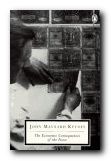 He represented the Treasury at the Versailles Peace Conference, but resigned in strong opposition to the terms of the draft treaty which he set out in his next book Economic Consequences of the Peace, (1919). Keynes argued that the war reparations imposed on Germany could not be paid by a country which had been devastated by war. He warned that this would lead to further conflict in Europe – which of course turned out to be true.
He represented the Treasury at the Versailles Peace Conference, but resigned in strong opposition to the terms of the draft treaty which he set out in his next book Economic Consequences of the Peace, (1919). Keynes argued that the war reparations imposed on Germany could not be paid by a country which had been devastated by war. He warned that this would lead to further conflict in Europe – which of course turned out to be true.
In 1925 Keynes married a Diaghilev ballerina, Lydia Lopokova, but they never had children. With his wife he helped to found the Vic-Wells ballet. He also financed the establishment of the Arts Theatre, Cambridge. Although he never earned a great deal from either his academic or government appointments, he made himself quite rich by stock market investments. He was reputed to spend the first part of every day in bed, telephoning instructions to his stock-broker. Of course he had the advantage of knowing what the government’s economic policies were going to be (since he helped to establish them) – so this sort of activity is what we would today call ‘insider trading’.
In 1936 Keynes published his most important book A General Theory of Employment, Interest and Money. It revolutionized economic theory by showing how unemployment could occur involuntarily. Keynes argued that the lack of demand for goods and rising unemployment could be countered by increased government expenditure to stimulate the economy.
By 1937 Keynes’ health began to deteriorate. He would never be fully fit again. However, his expertise was such that he was given an honorary role in the Treasury during World War Two. One of the most important projects he was involved in during his last years was the setting up of the International Monetary Fund.
In 1942 Keynes was elevated to the peerage and took his seat in the House of Lords, where he sat on the Liberal benches. Around the same time he became chairman of the newly formed Committee for the Encouragement of Music and the Arts which, before the end of the war, was renamed the British Arts Council. He died in 1946.
Bloomsbury Group – web links
![]() Hogarth Press first editions
Hogarth Press first editions
Annotated gallery of original first edition book jacket covers from the Hogarth Press, featuring designs by Vanessa Bell, Roger Fry, and others.
![]() The Omega Workshops
The Omega Workshops
A brief history of Roger Fry’s experimental Omega Workshops, which had a lasting influence on interior design in post First World War Britain.
![]() The Bloomsbury Group and War
The Bloomsbury Group and War
An essay on the largely pacifist and internationalist stance taken by Bloomsbury Group members towards the First World War.
![]() Tate Gallery Archive Journeys: Bloomsbury
Tate Gallery Archive Journeys: Bloomsbury
Mini web site featuring photos, paintings, a timeline, sub-sections on the Omega Workshops, Roger Fry, and Duncan Grant, and biographical notes.
![]() Bloomsbury: Books, Art and Design
Bloomsbury: Books, Art and Design
Exhibition of paintings, designs, and ceramics at Toronto University featuring Hogarth Press, Vanessa Bell, Dora Carrington, Quentin Bell, and Stephen Tomlin.
![]() Blogging Woolf
Blogging Woolf
A rich enthusiast site featuring news of events, exhibitions, new book reviews, relevant links, study resources, and anything related to Bloomsbury and Virginia Woolf
![]() Hyper-Concordance to Virginia Woolf
Hyper-Concordance to Virginia Woolf
Search the texts of all Woolf’s major works, and track down phrases, quotes, and even individual words in their original context.
![]() A Mrs Dalloway Walk in London
A Mrs Dalloway Walk in London
An annotated description of Clarissa Dalloway’s walk from Westminster to Regent’s Park, with historical updates and a bibliography.
![]() Women’s History Walk in Bloomsbury
Women’s History Walk in Bloomsbury
Annotated tour of literary and political homes in Bloomsbury, including Gordon Square, University College, Bedford Square, Doughty Street, and Tavistock Square.
![]() Virginia Woolf Society of Great Britain
Virginia Woolf Society of Great Britain
News of events, regular bulletins, study materials, publications, and related links. Largely the work of Virginia Woolf specialist Stuart N. Clarke.
![]() BBC Audio Essay – A Eulogy to Words
BBC Audio Essay – A Eulogy to Words
A charming sound recording of a BBC radio talk broadcast in 1937 – accompanied by a slideshow of photographs of Virginia Woolf.
![]() A Family Photograph Albumn
A Family Photograph Albumn
Leslie Stephens’ collection of family photographs which became known as the Mausoleum Book, collected at Smith College – Massachusetts.
![]() Bloomsbury at Duke University
Bloomsbury at Duke University
A collection of book jacket covers, Fry’s Twelve Woodcuts, Strachey’s ‘Elizabeth and Essex’.
© Roy Johnson 2000-2014
More on biography
More on the Bloomsbury Group
Twentieth century literature

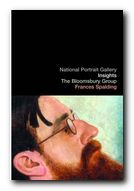 The Bloomsbury Group
The Bloomsbury Group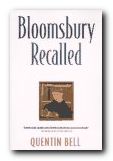 Bloomsbury Recalled
Bloomsbury Recalled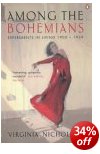 Among the Bohemians: Experiments in Living 1900—1930
Among the Bohemians: Experiments in Living 1900—1930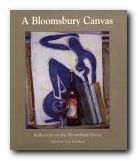 A Bloomsbury Canvas
A Bloomsbury Canvas